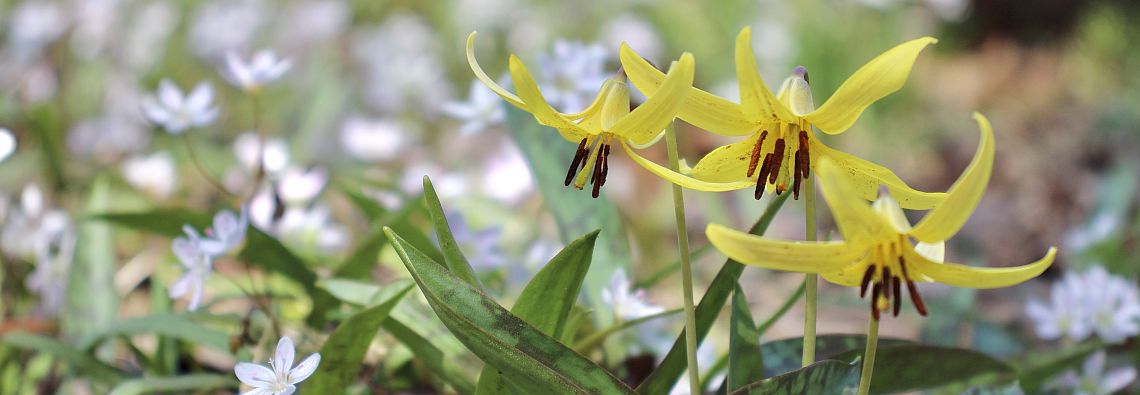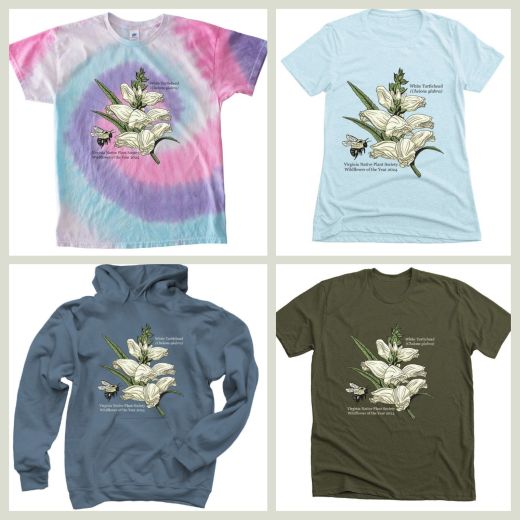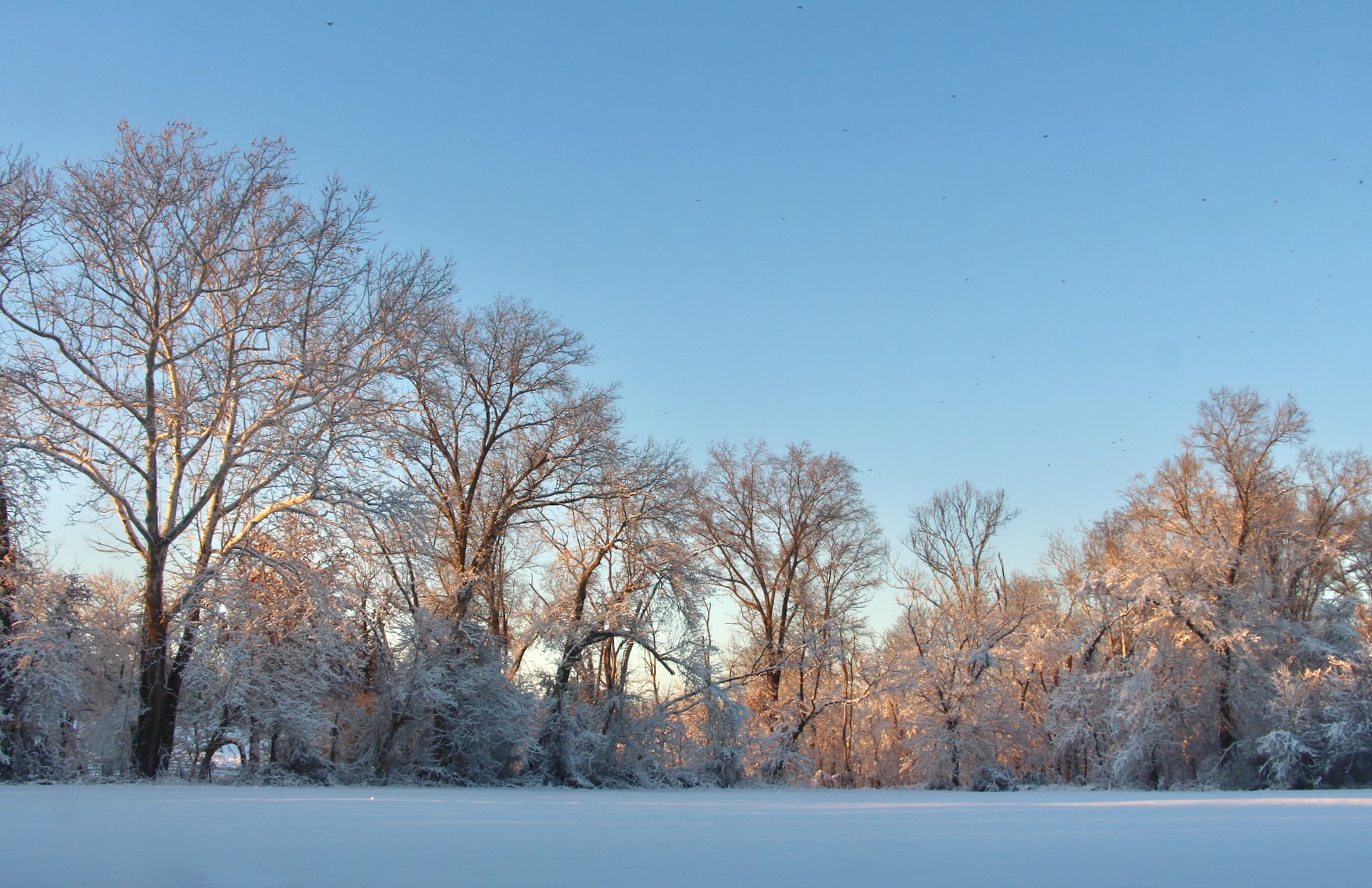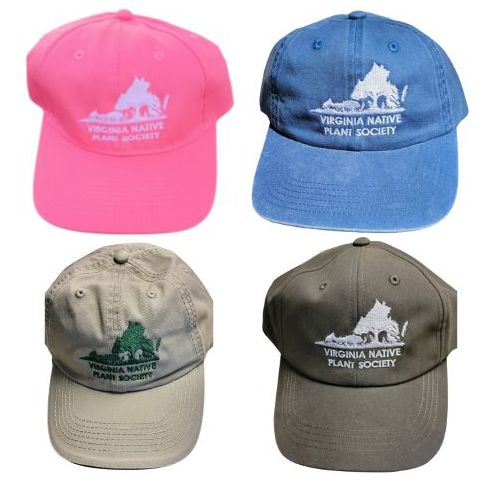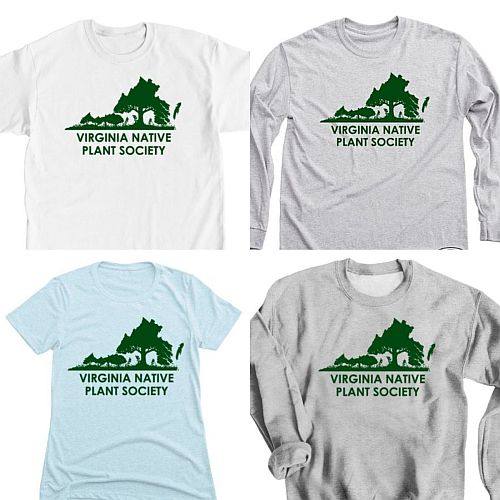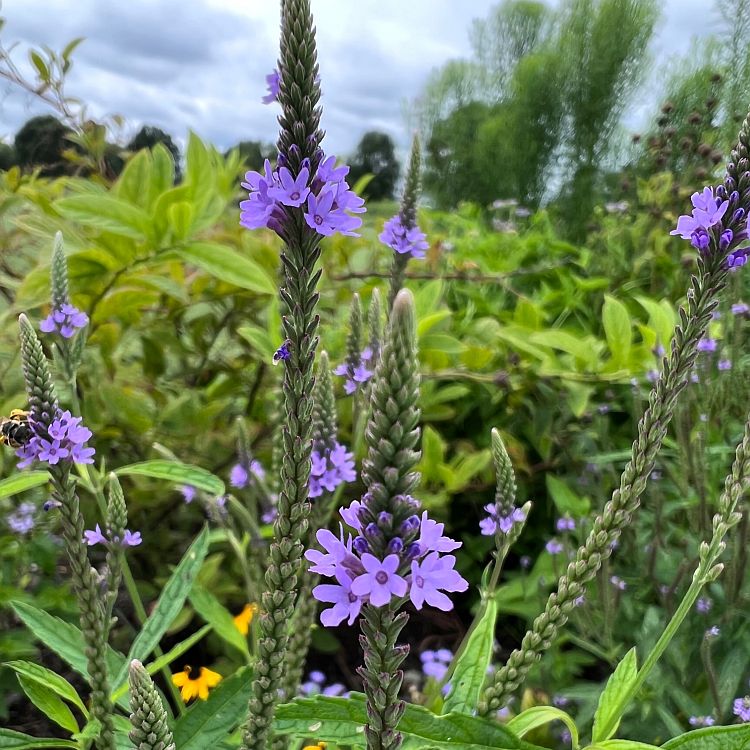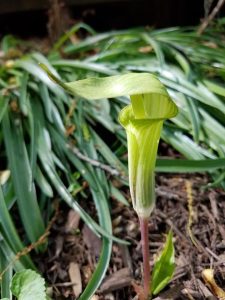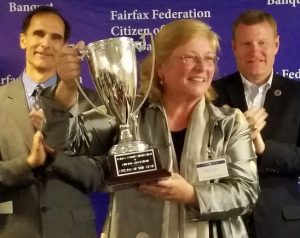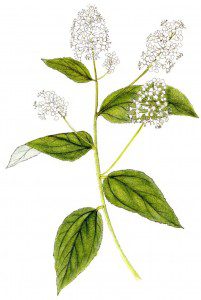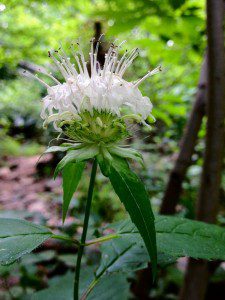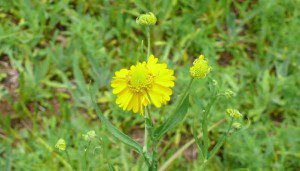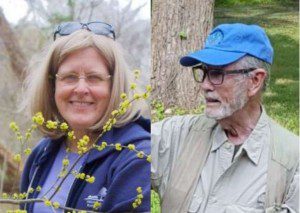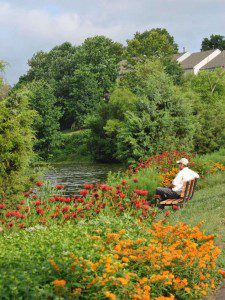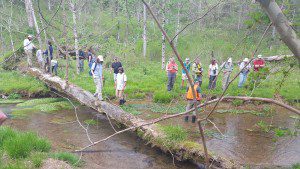News & Updates
• Our 2024 Wildflower of the Year T-Shirt Design Contest has ended. View the winners, voted on by VNPS members. The 1st place design by Nick Garnhart is featured on apparel and merchandise at our VNPS Bonfire.com Store. 4-4-2024
• Please join us in preserving Jocelyn Sladen’s legacy and in celebrating her life as a conservationist and a founder of VNPS. Donate now to help us save Torrey’s Mountain Mint. 4-4-2024
• The 2024 VNPS Wildflower of the Year is White Turtlehead. Read more about Chelone glabra, including its conservation status and where to see it. 3-1-2024
• Don't miss the Winter, 2024 Sempervirens. News from our 2023 Annual Meeting in Gloucester, how we support the Virginia Natural Area Preserves, hybridization of White Turtlehead (2024 VNPS Wildflower of the Year), native plants of South Africa and much more! 1-9-2024
• The Fall Sempervirens is out! Learn about the 2023 Research Grant awards, Natural Heritage news, Joe Pye Weed floral nectar, Maypop pollination, the new leaders elected at our Annual Meeting, and more! 10-9-2023
• In the Spring Sempervirens: Volunteers put the brakes on Mile-a-minute, Ruth Douglas battles invasive plants, pollination biology of Joe-Pye-Weed, upcoming events, and much more. 7-5-2023
• View our newest brochure "Your Yard Wants to be a Forest". And see more information and resources for the brochure. For printed copies, send a stamped, self-addressed envelope to VNPS Piedmont Chapter, PO Box 336, The Plains, VA 20198. 5-1-2023
• VNPS now offers Joe-Pye-Weed artwork on T-Shirts, Tote Bags, and Coffee Mugs. Visit our Online Store to order. 4-12-2023
• Recordings of presentations at our Annual Workshop Sessions March 7 & 14 are now available on our Vimeo site. 3-16-2023
• Thank you to all the artists who entered our 2023 Wildflower of the Year T-Shirt Design Contest! And congratulations to Tamurlaine Melby of Richmond who submitted the winning design. Watch for new T-Shirts featuring her design coming soon in the VNPS Store. 3-16-2023
• Last chance to purchase: Buttonbush and 40th Anniversary apparel sales end on Tuesday, February 28, 2023! Visit the VNPS Store now. 2-16-2023
• Generous donors contributed more than $50,000 in our Annual Fundraiser to help the Virginia Wilderness Committee protect Shenandoah Mountain. Thank you!! 2-12-2023
• The new Plant Ridge & Valley Natives Guide is available for pre-order. We expect to ship the guide to pre-order customers by May 1, 2023. 2-1-2023
• In the December Sempervirens: news from the 2022 Annual Meeting. highlights and accomplishments of 2022, rare plant communities and Buttonbush, restoring Piedmont's grassland wilderness, and more! 12-18-2022
• The VNPS Logo Ball Cap is now available in Pink! Limited quantities are available - Get yours now! 12-7-2022
• Protect Shenandoah Mountain: VNPS will partner with the Virginia Wilderness Committee (VWC) and the Friends of Shenandoah Mountain (FSM) to help protect and preserve four key wilderness areas in the proposed Shenandoah Mountain National Scenic Area of Virginia. Learn more and donate now. 11-6-2022
• Our 40th Anniversary Annual Meeting was held on September 17 at Natural Bridge, VA. View more information. 7-14-2022
• Catch up on VNPS news and events in the new Summer Sempervirens. We welcome Melody Mobley as our new Diversity, Equity, and Inclusion Chair, review new discoveries of Bittercress and Ozark Milkvetch, learn about Buttonbush and colleters, and much more. 7-1-2022
• Buttonbush, the 2022 Wildflower of the Year, is now available on VNPS T-Shirts and Tote Bags. Visit our Online Store to order. 3-15-2022
• Did you miss any of the Annual Workshop sessions on March 8 and 15? You can view all the presentations on Vimeo.
• Check out the Winter, 2022 Sempervirens: Learn more about Wisteria and Button Bush, Virginia's native plant guru Gary Fleming, confessions of a Poison Ivy enthusiast, upcoming events, and more!
• View the Final Report of the Virginia State Working Group which explored options for phasing out the sale and use of invasive plants in Virginia’s horticultural industry, and to promote the sale and use of native plants. 1-19-2022
• The 2022 Research Grant Application Period is now open. Find out more about submitting research proposals until March 1, 2022. 1-1-2022
• Thanks to generous donors and bidders, VNPS raised more than $6,000 in our Online Auction to benefit the Natural Areas Preserves Fund. 12-7-2021
• Piedmont Wildflower of the Week #89: This year-round fern is named for a winter holiday. View photos and last week's answer.
• Piedmont Wildflower of the Week #84: Clues: In a wetland, what has cigar-shaped flower heads among tall leaves? View photos and last week's answer.
• Seven new educational videos about the Flora of Virginia are now available. Watch the videos on the VNPS Vimeo page.
• Did you miss our 2021 Annual Meeting on September 17-18? Watch the recorded videos including presentations by Nikki Rovner of the Nature Conservancy and Jason Bulluck and Rob Evans of Virginia's Natural Heritage Program.
• Piedmont Wildflower of the Week #76: Do you know the flowering plant with tall golden plumes which fills a sunny meadow? View the photos and last week's answer.
• Be sure to read the Summer 2021 edition of Sempervirens : a new Natural Area Preserve at Difficult Creek, updates on Virginia's Invasive Plant Working Group, the species of Wisteria, a profile of botanist Tom Wieboldt, and more.
• Check the latest updates on Virginia's actions to phase out the sale and use of Invasive plants. View information about the Invasive Plant Working Group activities.
• Statement on Cultivars. Read the Statement recently adopted by the VNPS Board of Directors.
• Piedmont Wildflower of the Week #75: A short wand shines paler than its sister species. View the photos of this plant and last week's answer.
• Piedmont Wildflower of the Week #74: Can you identify this plant with odd purplish flowers which bloom on a tall candelabrum? See photos and last week's answer.
• Piedmont Wildflower of the Week #72: This flower's purple-blue shimmer brightens the late-summer meadow. What is it? See photos and last week's answer.
• Piedmont Wildflower of the Week #71: This "gentle giant" has huge leaves and umbels. Do you know it? See photos and last week's answer.
• Piedmont Wildflower of the Week #70: This flower's wands of white flowers droop over a marsh. What do you think it is? See photos and last week's answer.
• Piedmont Wildflower of the Week #69: Gay yellow flowers give way to fat black pods. What do you think? See photos and last week's answer.
• Piedmont Wildflower of the Week #68: Can you identify this small white flower which corkscrews up a slender wand? See photos and last week's answer.
• Piedmont Wildflower of the Week #67: This deep-rooted sun-lover has brilliant orange-yellow flowers. What is it? See photos and last week's answer.
• Piedmont Wildflower of the Week #66: This well-defended native has two quite different kinds of flowers. Know what it is? See photos and last week's answer.
• Piedmont Wildflower of the Week #65: Tall, graceful tapers light up the shady woodland. Do you know it's name? See photos and last week's answer.
• Piedmont Wildflower of the Week #64: This wetland shrub has a flamboyant, musky, five-petaled flower. Do you know it's name? See photos and last week's answer.
• Piedmont Wildflower of the Week #63: A relative of coffee, this opposite-leaved shrub loves wet places. What is it? See photos and last week's answer.
• Piedmont Wildflower of the Week #62: This delicious wildflower blooms on thorny pads. Do you know it? See photos and last week's answer.
• Piedmont Wildflower of the Week #61: This littlest member of the bellflowers might grace your yard in early summer. Can you identify it? See photos and last week's answer.
• Piedmont Wildflowers of the Week #58, #59, & #60: We provide the clues - can you identify the native plants? See all our weekly questions. 6-6-2021
• Piedmont Wildflower of the Week #57: A cloud of strappy petals haloes this member of the Olive family. What is it? See photos and last week's answer.
• Piedmont Wildflower of the Week #56: White spots might spatter this plant's lobed leaves. What do you think it is? See photos and last week's answer.
• Piedmont Wildflower of the Week #55: Hooded flowers form a sort of pinwheel over ferny leaves. Can you identify it? See photos and last week's answer.
• Piedmont Wildflower of the Week #54: This delicate white flower has curvaceous basal leaves. Can you identify it? See photos and last week's answer.
• Piedmont Wildflower of the Week #53: Gray-green leaves catch your eye before the little ruffled flowers bloom. What is it? See photos and last week's answer.
• Piedmont Wildflower of the Week #52: This spicy beauty lies low on the forest floor. Do you know what it is? See photos and last week's answer.
• Piedmont Wildflower of the Week #51: In the marsh, big yellow flowers glow above heart-shaped leaves. Do you know what it is? See photos and last week's answer.
• Piedmont Wildflower of the Week #50: White flowers rise from a stone ledge in very early spring. Do you know what it is? See photos and last week's answer.
• Piedmont Wildflower of the Week #49: You might mistake this woodland wildflower for a pine cone or an ear of corn. What is it? See photos and last week's answer.
• Piedmont Wildflower of the Week #48: This low-lying plant in the Heath family is a promise of Spring. What is it? See photos and last week's answer.
• Did you miss any of the 2021 VNPS Annual Workshop sessions on March 2 and March 9? Watch the recorded videos now. 3/10/2021
• Piedmont Wildflower of the Week #47: This plant's long golden catkins dangle at the water’s edge. What is it? See photos and last week's answer.
• Did you miss the VNPS Annual Workshop Day 1 presentations on March 2? Watch the Workshop video recordings now at https://vimeo.com/vnps. 3/5/2021
• Action Alert Update: House Joint Resolution (HJ 527) was approved by the Virginia House and Senate and is awaiting Governor Northam's signature. 2/17/2021
• Piedmont Wildflower of the Week #46: This small rock-loving fern has once-cut fronds. What is it? See photos and last week's answer.
• Piedmont Wildflower of the Week #45: Corky ridges and warts cover the trunk. What is it? See photos and last week's answer.
• Piedmont Wildflower of the Week #44: This shrub or small tree in the Rose family has unbranched spines. See photos and last week's answer.
• Piedmont Wildflower of the Week #43: This shrub or small tree in the Rose family has unbranched spines. See photos and last week's answer.
• Piedmont Wildflower of the Week #42: This lover of wet ground shows very different fronds in summer and winter. See photos and last week's answer.
• Action Alert Update: House Joint Resolution (HJ 527) was approved by the House and will go to the Senate for a vote. View VNPS President Nancy Vehrs testimony before the Studies Subcommittee of the House Rules Committee and skip forward to about 08:28 AM. 1/26/2021
• What's being done to protect Virginia's plants? In his video presentation on January 13, Chris Ludwig examined the mounting threats to our native flora and show what’s being done to mitigate these risks. 1/1/2021
• Cathy Mayes Memorial Fund: The Piedmont Chapter has formed a partnership with the Clifton Institute near Warrenton to honor the memory of Cathy Mayes. See more about the Memorial Fund and how to donate in Cathy's memory. 12/20/2020
• Piedmont Wildflower of the Week #41: This twining vine has distinctive three-bladed capsules. See photos and last week's answer.
• Piedmont Wildflower of the Week #39: This little evergreen vine in the Madder family brightens the winter woods. See photos and last week's answer.
• Piedmont Wildflower of the Week #38: Brilliant, densely packed red berries stand out dramatically on bare branches. See photos and last week's answer.
• Piedmont Wildflower of the Week #37: In an old field or in your living room at Christmas, this familiar tree has much to give. What is it? See photos and last week's answer.
• Piedmont Wildflower of the Week #35: Don’t sample this alluring yellow fruit in the Nightshade family. What is it? See photos and last week's answer.
• Piedmont Wildflower of the Week #34: Look upward to find this native shrub clasping its host tree. What is it? See photos and last week's answer.
• Piedmont Wildflower of the Week #33: This widespread low tree or tall shrub in the Cashew family comes into its own in the fall. What is it? See photos and last week's answer. 11/28/202
• Piedmont Wildflower of the Week #32: A member of the Evening primrose family holds seeds in marvelous capsules. What is it? See photos and last week's answer. 11/22/2020
• Read about Red Chokeberry that shines in all seasons in Betsy Washington's latest blog post. 11/9/2020
• A study funded by a VNPS Research Grant to Dr. Andrea Weeks at George Mason University aims to restore and recover native plant diversity at Gilbert's Corner in Loudoun County. Register for Dr. Weeks' Zoom presentation on her project on November 15. 11/6/2020
• Piedmont Wildflower of the Week #30: In November, this plant's berries seem to stare back at you. Handle with care! See photos and last week's answer.
• Piedmont Wildflower of the Week #29: This shrubby tree has flowers with four strappy yellow petals. Look for them around Halloween. See photos and last week's answer.
• Piedmont Wildflower of the Week #28: These small yellow flowers shine on shallow river shorelines - what are they? See photos and last week's answer.
• Piedmont Wildflower of the Week #27: Show-stopper in the fall, with scarlet leaves and dark blue fruit? See photos and last week's answer.
• Piedmont Wildflower of the Week #26: This mint family member has tiny bluish flowers and a sharp aroma. See photos and last week's answer. 10/10/2020
• Piedmont Wildflower of the Week #25: Graceful white sprays of these odd flowers appear above a whorl of three leaves. See a photo and last week's answer.
• Goldenrod Glows in the Fall: Read our latest blog post about this Fall beauty.
• Piedmont Wildflower of the Week #24: This super-strong member of the daisy family holds its clusters of brilliant magenta or purple flowers as much as ten feet high. See a photo and last week's answer.
• Piedmont Chapter Wildflower of the Week #23: What is a leathery evergreen fern with spores in tan globes? See a photo and last week's answer.
• VNPS Guidance for Walks and In-Person Events during the COVID-19 Pandemic.
• Wildflower of the Week #22: In the Mint family with squarish heads of packed purple flowers? See a photo and last week's answer.
• Piedmont Wildflower of the Week #21: Can you identify a member of the Bellflower family with thick spires of violet-blue? See a photo and last week's answer.
• Piedmont Wildflower of the Week #19: What wispy grass lends a purple haze to a whole field when blooming? See a photo and last week's answer. 8/21/2020
• The (Northern) Piedmont Native Plants guide is back in stock. Check out all the regional native plant guides available for download and print copy purchase. 8/17/2020
• Piedmont Wildflower of the Week #18: A yellow flower in the bean family, tall patches in meadows, pods turn black in fall. Do you know the name? 8/15/2020
• Piedmont Chapter Wildflower of the Week #17: Evergreen leaves, silvery veins, tiny hairs cover the flowers. What is it? 8/9/2020
• Passionflower Pops in Summer: Read Betsy Washington's new blog post from the Northern Neck. 7/30/2020
• Piedmont Wildflower of the Week: What is this fragrant member of the Onograceae family that shines best at sunset? 7/25/2020
• New Video: Marion Lobstein and Sally Anderson present an Overview and How To on the Flora of Virginia Mobile App. 7/13/2020
• The Atlantic Coast Pipeline project has been canceled. See more about opposition to the project and the VNPS Resolution opposing the project. 7/5/2020
• VNPS Guidance for Walks/Events during the COVID-19 Pandemic. The health and safety of our members is very important to us. Time out-of-doors is part of a healthy lifestyle both physically and mentally. However, during this COVID-19 pandemic, we must be mindful of the importance of social distancing to minimize the spread of the disease. For example, during regular guided native plant or botanical walks, participants often gather around a specific plant as the leader discusses it. Therefore, we recommend erring on the side of caution and suspending guided group walks until health conditions in your area permit such gatherings. Please follow the recommendations of the CDC and the Virginia Department of Health.
While we will leave the decision to chapter leaders about holding walks, the VNPS suggests virtual or self-guided walks and events in the interim. For example, some chapters have flagged walks, virtual walks, Zoom presentations, flower of the week emails, and more to engage the public. 6/10/2020
• The Summer 2020 edition of Sempervirens is now online. Read about the pandemic's challenges and changes for the Natural Heritage Program and for VNPS events and activities, and how nature offers solace for us all. Meet our Conservation Chair Alex Fisher and learn about the autecology of Wild Geranium by Botany Chair John Hayden. 5/22/2020
• The First 10 Years of VNPS: How We Began. This account of VNPS and Potowmack Chapter beginnings shows that volunteers can make a difference with knowledgeable leaders, willing associates and continuity of purpose. 5/12/20
• Pinxterblooms: Performing Now! Read Betsy Washington's latest blog post. 4-23-20
• 25 Years of the VNPS Bulletin Are Now Online. We just added almost all issues of the Bulletin from 1989 to 2009 thanks to the Internet Archive. Be sure to browse our updated Bulletin Archive. 4/18/20
• Due to CDC recommendations and other ongoing closures related to the Coronavirus outbreak, we have cancelled the March 14, 2020 event ‘Earth’s Climate: Present, Past & Future'. We regret having to make this decision, and hope to be able to offer this program at another time. We will refund registration fees. [More information] 3/11/2020
• The Spring 2020 edition of Sempervirens is now available. Read about our upcoming Annual Meeting in Abingdon, the VNPS Mission, and more. 3/3/2020
• An updated version of the popular Wildflowers for Butterfly Gardens brochure is now available to download. 2/19/2020
• VNPS Funded Research Reveals Which Trees are Dying and Why. 12/29/2019
• Piedmont Chapter Curlyheads Flower T-Shirts are now available for sale! These are beautiful shirts though in limited quantities. 10/24/2019
• VNPS Member Harry Glasgow Honored by Prince William Conservation Alliance.
• The VNPS mourns the loss of its founder, Mary Painter, on October 6, 2019. View more information and Mary's obituary.
Join
Become a Member:
Support Our Mission.
Donate
Support VNPS with
your donation today.
Upcoming Events
Find Field Trips, Meetings, Programs and Plant Sales.
Find a Chapter
Get involved in your
local VNPS chapter.
Pawpaws And The Zebra Swallowtail Butterfly
By Mary Lee Epps Pawpaws have a great deal to offer—handsome flowers in the spring, delicious and highly nutritious fruit in the early fall, plus they are the only host plant of one of our most beautiful butterflies, the zebra swallowtail. Our pawpaw (Asimina triloba) is the northernmost member of the mostly tropical Annonaceae (or…
Read MoreSave Plants, Save The Planet, Save Ourselves — Native Plants and Nature Based Solutions to Climate Change And Other Threats to Humanity
By Emily B. Roberson and Doug Tallamy for the Native Plant Conservation Campaign Sea level rise, record breaking heat waves, floods, pollution, mass extinction — 2019 is frightening! What if there were one simple thing individuals, businesses and communities could do to address these problems? There is! Plant native plants! Native wildflowers and trees are…
Read More‘Spirit of Inquiry’ drove Chris Ludwig
Chris Ludwig, botanist, zoologist, and general all-arounder with the Virginia Natural Heritage Program, is off to greener pastures after 30 very busy years in the conservation community. And I do mean actual pastures right now since, as I write, Chris and his wife, Jolie, are staring out across the Serengeti as wildebeest swarm and flocks…
Read MoreJack-in-the-Pulpit Preaches Preservation
Unlike many wildflowers that make a beautiful but brief spring appearance, the perennial Jack-in-the-pulpit (Arisaema triphyllum) appears later in April and continues to add interest to moist woodlands until late fall. The hooded inflorescence which resembles a pulpit (a spathe) has a “Jack” (a spadix) standing in the center as if delivering a sermon. Perhaps…
Read MoreVNPS Member Catherine Ledec Named Fairfax County Citizen of the Year
Recently I had the pleasure of attending a banquet where VNPS member Cathy Ledec was honored as Fairfax County’s 2018 Citizen of the Year. How gratifying it is to see someone recognized for efforts in preserving our natural environment! This prestigious award has been presented for the past 69 years by the Fairfax County Federation…
Read MoreWildflower of the Year 2019 New Jersey Tea (Ceanothus americanus)
New Jersey Tea is a low shrub, generally less than 1 m tall and often profusely branched. Stems are finely hairy, but may become smooth with age. Vegetative stems are perennial, but flowering stems persist for just a single year. Leaves are mostly 5 to 10 cm long; leaf shape varies from narrowly to widely…
Read MoreNew and “Resurrected” Endemic Plants of Virginia’s Shale Region
Back in 2014, John Townsend, VNPS Director at Large and Staff Botanist for the Virginia Department of Conservation and Recreation, wrote about A Tale of Shale: Virginia’s New Violet describing unique plant populations in north central Virginia. In this new report, John provides an update on the Viola and the discovery of two new potential taxa…
Read MoreVNPS Grows Two Virginia Natural Area Preserves
Mount Joy Pond Natural Area Preserve Update: January 24, 2019. Several VNPS members visited our newly-acquired site and the adjacent DCR property. Check out the photo album on our Facebook page! We can’t wait to see what it looks like in the spring. The Virginia Native Plant Society has become a landowner! On October 23, 2018…
Read MoreVNPS Members Honored by Prince William Conservation Alliance
The Prince William Conservation Alliance recently honored two long-time members of the Virginia Native Plant Society, Nancy Vehrs and Jim Waggener, for their service, contributions, and advocacy for conservation. The Alliance works to explore, enjoy and protect our natural areas, and increase community involvement in stewardship opportunities. Nancy Vehrs received the 2018 Heart of Gold Award.…
Read MoreIf You Plant It, They Will Come
“If you plant it they will come,” to paraphrase a line from the iconic Kevin Costner film, “Field of Dreams.” That was the hope of John Magee, former Horticulture Chair of the Virginia Native Plant Society. John’s firm, Magee Design, partnered with Ashburn Village in Loudoun County in an effort to revitalize Tippecanoe Lake, one of 8…
Read MoreA Visit to The Cedars Natural Area Preserve Appreciation Days
I’m back from far southwest Virginia, and I have to share. The Virginia Native Plant Society contributed to purchasing land to join together some of the disparate tracts of The Cedars Natural Area. In appreciation, Rob Evans, Natural Areas Protection Manager, Virginia Natural Heritage Program in the Virginia Department of Conservation and Recreation (DCR), organized a…
Read MoreNew Book: Climate-Wise Landscaping, Practical Actions for a Sustainable Future
Perfect! A book on climate-wise landscaping written by two authors who understand the vital role native plants must play in any future we can both envision and want to live in. What could be more important right now? We don’t want to sit around wringing our hands, say the authors; we want to DO something…
Read More
